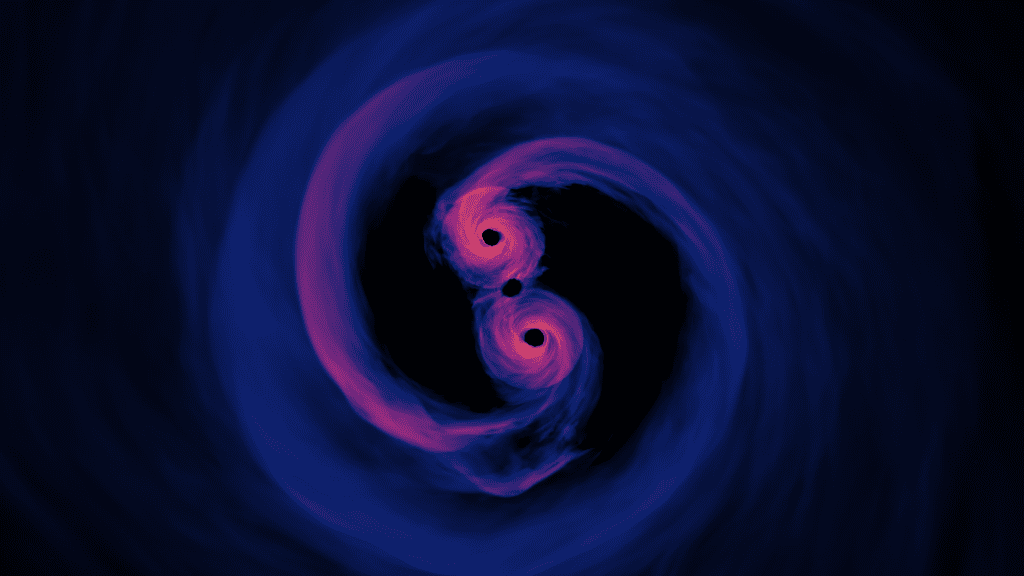Sagar is a 6th-year graduate student working with his advisor, Dr. Marco Ajello, in High-energy astrophysics. Check out his paper here and press release here.
“We (possibly) found a binary supermassive black hole system. Galaxy mergers can lead to the supermassive black holes at their centers to merge as well. When they do, they emit gravitational waves, which are of great interest to astrophysicists, but today’s ground-based detectors aren’t sensitive to the gravitational waves emitted by binary supermassive black holes. We can thus look for optical signatures of orbiting binary systems to find candidates for future space-based gravitational wave detectors. By analyzing 100 years of optical data on one of the binary candidates, PG 1553+113, we found a signature of two supermassive black holes orbiting very close to each other.”

Image credit: NASA’s Goddard Space Flight Center/Scott Noble